Dawei Ding,Shujia Li,Nian Wang
(School of Electronics and Information Engineering, Anhui University, Hefei 230601, China)
Abstract:
For the purpose of investigating the nonlinear dynamics of the system, a fractional-order Chuas circuit based on the memristor deriving from the integer-order counterparts is provided. Firstly, according to the Lyapunovs indirect method, the stability analysis of the memristive system is made, and it shows that when the fractional-orders parameter of memristive system passes a critical value, the system loses the stability and bifurcation occurs. Then the bifurcation and chaos behaviors of fractional-order memristive system are shown using bifurcation diagrams with varying fractional orders of the system and other parameters. Furthermore, the chaotic behaviors of memristive chaotic system are proved by the waveform, phase plot and largest Lyapunov exponent diagram. Finally, theoretical results are illustrated and validated with the given numerical simulations.
Key words: memristor dynamical behavior fractional-order stability
DOI:10.11916/j.issn.1005-9113.16136
Clc Number:O415.5
Document Code::A
Fund:
Dawei Ding, Shujia Li, Nian Wang. Dynamic Analysis of Fractional-Order Memristive Chaotic System[J]. Journal of Harbin Institute of Technology (New Series), 2018, 25(2): 50-58. DOI: 10.11916/j.issn.1005-9113.16136.

Fund Sponsored by the National Natural Science Foundation of China (Grant No.61201227), the Funding of China Scholarship Council, the Natural Science Foundation of Anhui Province (Grant No.1208085MF93) and the 211 Innovation Team of Anhui University (Grant Nos.KJTD007A and KJTD001B) Corresponding author Dawei Ding, E-mail:dwding@ahu.edu.cn Article history Received: 2016-06-22
Contents Abstract Full text Figures/Tables PDF
Dynamic Analysis of Fractional-Order Memristive Chaotic System
Dawei Ding

 , Shujia Li, Nian Wang
, Shujia Li, Nian Wang School of Electronics and Information Engineering, Anhui University, Hefei 230601, China
Received: 2016-06-22
Fund: Sponsored by the National Natural Science Foundation of China (Grant No.61201227), the Funding of China Scholarship Council, the Natural Science Foundation of Anhui Province (Grant No.1208085MF93) and the 211 Innovation Team of Anhui University (Grant Nos.KJTD007A and KJTD001B)
Corresponding author: Dawei Ding, E-mail:dwding@ahu.edu.cn
Abstract: For the purpose of investigating the nonlinear dynamics of the system, a fractional-order Chua's circuit based on the memristor deriving from the integer-order counterparts is provided.Firstly, according to the Lyapunov's indirect method, the stability analysis of the memristive system is made, and it shows that when the fractional-orders parameter of memristive system passes a critical value, the system loses the stability and bifurcation occurs.Then the bifurcation and chaos behaviors of fractional-order memristive system are shown using bifurcation diagrams with varying fractional orders of the system and other parameters.Furthermore, the chaotic behaviors of memristive chaotic system are proved by the waveform, phase plot and largest Lyapunov exponent diagram.Finally, theoretical results are illustrated and validated with the given numerical simulations.
Key words: memristor dynamical behavior fractional-order stability
1 Introduction Memristor, the fourth circuit element, was postulated in 1971 by L.O.Chua[1], which represented a relationship between charge and flux.In memristive system, the nonlinear characteristics of memristor is indispensable.It could bring about the chaos.In 2008, researchers of HP labs fabricated the first memristor[2].Memristors' potential applications span multitudinous fields ranging from modeling neural networks[3] to applying nano-scale's nonvolatile memories[4].Since memristor is a basic circuit element, the applications of circuit based on memristor are also a research hot spot[5], especially in chaotic circuits, for example, Dasgupta et al.[6] put forward a chaotic circuit based on memristor which was applied in image encryption.
Recently, many physical systems have been found to display fractional-order dynamics, and researches about system with fractional-order have attracted increasing attention.Fractional calculus involves in many fields, for example, in physics[7], electrical circuit theory[8], control systems[9], signal processing [10-11], and chemical mixing[12].Particularly, it plays a great significant role in chaos theory, which means that chaotic phenomena are existent in fractional order dynamic systems.In 1995, Chua system with fractional-order[13] was firstly presented by Hartley, and he pointed out that when the system's total order was less than 3, the system would exhibit chaotic behavior.Then Lorenz system with fractional-order was studied by Griagorenko et al.[14], and its chaotic dynamics was also analyzed.In 2010, Petrá? provided memristor-based Chua's circuit[15] with fractional order.It has also other fractional-order counterparts proposed in Refs.[16-18]. Moreover, the chaotic circuit system with fractional order has also achieved great progress.For instance, Shaik et al.[19] realized an experimental circuit system which was a simple modulus nonlinearity jerk equation, and they also used the function of a variable control parameters to study the chaotic behavior.Meanwhile, several systems with fractional-order derived from the corresponding integer-order system have been proposed.
In the paper, a quadratic memristor function is used in the chaotic circuit using the flux-controlled memristor[20] to replace the Chua's circuit's diode.Recalling that applications of traditional Chua's system may be multitudinous, while the analyses of this fractional-order memeristor Chua's system are few.In particular, to demonstrate the chaotic dynamics, the theoretical analysis of its dynamics is described in detail.Meanwhile we study this fractional-order system's complex chaotic behavior by bifurcation diagrams with different bifurcation parameters and the largest Lyapunov exponent diagram.Fraction-order system can generate complex chaotic behavior with lower order than the integer-order system.
The structure of this paper is as follows.In the second section, we first discuss the mathematical preliminaries of fractional derivative and memristor.The dynamic equations of the fractional-order memristive system are given in the third section.Then in the fourth section, we analyze the stability of equilibrium point about the memristive system with fractional-order. In addition, we discuss phase portraits, bifurcation diagram and largest Lyapunov exponent diagram under different order q about the system in Section 5.This paper concludes with a summary of this work in Section 6.
2 Background 2.1 Fractional Calculus When it comes to fractional calculus, there are many ways to define derivatives presented in Refs.[21-22].In this paper, we use Caputo[23] to define the fractional derivative:
${D_{0,t}}^qw\left( t \right) \buildrel \Delta \over = \frac{1}{{\mathit\Gamma \left( {m - q} \right)}}\int_0^t {\frac{{{w^{(m)}}\left( \tau \right)}}{{{{\left( {t - \tau } \right)}^{q + 1 - m}}}}} {\rm{d}}t$ (1)
where Γ(q) is the gamma function, m-1 < q≤m and m∈ N.It is worthy to note that the Caputo formula (1) is somewhat similar to the Davison-Essex formula reported in Ref.[24].
2.2 Memristor Model Memristor is a two-terminal element, which is expressed as a function, and the function describes the relationship between the flux (φ) around the terminals and the charge (Q) that passes through the element.We use a flux controlled memristor in this paper, and express it by a function of its incremental memductance W(φ) :
$W\left( \phi \right) \buildrel \Delta \over = \frac{{{\rm{d}}Q\left( \phi \right)}}{{{\rm{d}}\phi }}$ (2)
The relationship between the voltage v(t) and current i(t) through the memristor can be written as:
$i\left( t \right) \buildrel \Delta \over = \frac{{{\rm{d}}Q}}{{{\rm{d}}\phi }} = \frac{{{\rm{d}}Q}}{{{\rm{d}}t}}\frac{{{\rm{d}}t}}{{{\rm{d}}\phi }} = W\left( {\phi \left( t \right)} \right)v\left( t \right)$ (3)
In Eq.(3), we simplified
Figure 1
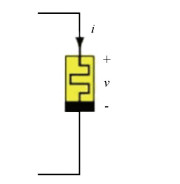 Figure 1 Memristor's circuit model
Figure 1 Memristor's circuit model 3 Memristive Chaotic System Based on Chua's Circuit 3.1 Integer-Order Case The integer-order memristive circuit described in this paper is an autonomous Chua's circuit system presented in Ref.[20], and it simply uses a flux-controlled memristor[25] instead of Chua's diode.
In Fig. 2, four fundamental circuit elements including resistor R, capacitor C, inductor L, and memristor M, constitute the memristive dynamical circuit.By utilizing KVL around the loop, the dynamics of the circuit based on memristor[25] are described as:
$\left\{ \begin{array}{l}\frac{{{\rm{d}}\phi }}{{{\rm{d}}t}} = {v_1}\left( t \right)\\\frac{{{\rm{d}}{v_1}\left( t \right)}}{{{\rm{d}}t}} = \frac{1}{{{C_1}}}(\frac{{{v_2}\left( t \right)-{v_1}\left( t \right)}}{R}-i\left( t \right))\\\frac{{{\rm{d}}{v_2}\left( t \right)}}{{{\rm{d}}t}} = \frac{1}{{{C_2}}}(\frac{{{v_1}\left( t \right)-{v_2}\left( t \right)}}{R} - {i_L}\left( t \right))\\\frac{{{\rm{d}}{i_L}\left( t \right)}}{{{\rm{d}}t}} = \frac{{{v_2}\left( t \right)}}{L}\end{array} \right.$ (4)
Figure 2
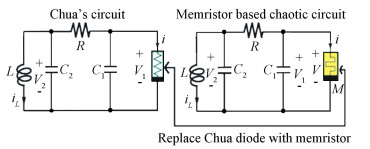 Figure 2 The memristor chaotic circuit
Figure 2 The memristor chaotic circuit And i(t) is defined by:
$i\left( t \right) = W\left( {\phi \left( t \right)} \right){v_1}\left( t \right) = \frac{{{\rm{d}}Q}}{{{\rm{d}}\phi }}{v_1}\left( t \right)$ (5)
A cubic nonlinear function was chosen to define the Q(φ) :
$Q\left( \phi \right) = \alpha \phi + \beta {\phi ^3}$ (6)
It is clear that the model of memristor with smooth nonlinearities would be more easy to be fabricated.And chaos can be occurred in chua's circuit based on a cubic nonlinear memristor[26].Thus, the function of memductance W(φ) is described as:
$W\left( \phi \right) = \frac{{{\rm{d}}Q}}{{{\rm{d}}\phi }} = \alpha + 3\beta {\phi ^2}$ (7)
Let α=-0.769×10-3 and β=0.029×10-3 in Eq.(6), which is similar to value in Ref.[27].From the results in Ref.[20], one can point out that, according to simulations in Fig. 3, the system can cause chaotic behavior.
Figure 3
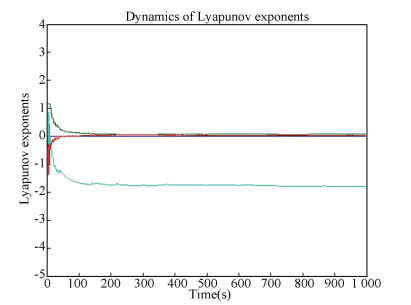 Figure 3 Lyapunov exponents program of integer-order Chua's system
Figure 3 Lyapunov exponents program of integer-order Chua's system 3.2 Fractional-Order Case The fractional equations[28] can be easily deduced from the corresponding integer-order system (4) by making the change as:
$w \buildrel \Delta \over = \phi, x \buildrel \Delta \over = {v_1}\left( t \right), y \buildrel \Delta \over = {v_2}\left( t \right), z \buildrel \Delta \over = {i_{\rm{L}}}\left( t \right)$
Then:
$\left\{ \begin{array}{l}{D^q}w = x\\{D^q}x = \frac{1}{{{C_1}}}\left( {\frac{{y-x}}{R}-W\left( x \right)x} \right)\\{D^q}y = \frac{1}{{{C_2}}}\left( {\frac{{x-y}}{R} - z} \right)\\{D^q}z = \frac{y}{L}\end{array} \right.$ (8)
The initial time t0=0 and order q∈[0, -1]. Current and voltage variables are rescaled as:
$w \buildrel \Delta \over = \phi, x \buildrel \Delta \over = \frac{{{v_1}}}{\delta }, y \buildrel \Delta \over = \frac{{{v_2}}}{\delta }, z \buildrel \Delta \over = \frac{{{i_{\rm{L}}}}}{\delta }$
By simplifying the equations, we get:
$\left\{ \begin{array}{l}{D^q}w = \delta x\\{D^q}x = \frac{1}{{{C_1}}}\left( {\frac{{y-x}}{R}-W\left( w \right)x} \right)\\{D^q}y = \frac{1}{{{C_2}}}\left( {\frac{{x-y}}{R} - z} \right)\\{D^q}z = \frac{y}{L}\end{array} \right.$
By using
$\left\{ \begin{array}{l}{D^q}w =-\frac{x}{\zeta }\\{D^q}x = \frac{1}{{{C_1}}}\left( {\frac{{y-x}}{R}-W\left( w \right)x} \right)\\{D^q}y = \frac{1}{{{C_2}}}\left( {\frac{{x - y}}{R} - z} \right)\\{D^q}z = \frac{y}{L}\end{array} \right.$ (9)
4 Stability Analysis of Memristive Chaotic System with Fractional-Order We discuss the stability analysis about equilibrium point of system (9), and consider a necessary condition which makes the system remain chaos.The vector X =[w x y z]T, then general nonlinear form of system (9) was given:
${D^q}\mathit{\boldsymbol{X}} = f\left( \mathit{\boldsymbol{X}} \right)$ (10)
By solving the following equation, we can calculate the equilibrium point of the system (10) as:
${D^q}\mathit{\boldsymbol{x}} = 0 \Leftrightarrow f({\mathit{\boldsymbol{x}}_{{\rm{eq}}}}) = 0$
Obviously, system (9) has one equilibrium point which is located at xeq=[0 0 0 0]T.Based on Lyapunov's indirect method[29], we can investigate the stability property through considering stability of nonlinear system (9) as the equilibrium point of the linear counterpart.Then the system (10) is linearized as:
${D^q}\mathit{\boldsymbol{x}} = \mathit{\boldsymbol{Jx}},(0 < q < 1)$ (11)
where
$\mathit{\boldsymbol{J}} = {(\frac{{\partial f}}{{\partial x}})_x}_{_{{\rm{eq}}}} = 0$
is the Jacobian matrix at the equilibrium point.
Now, the following theorem is proposed to explain the stability of linear fractional system (11).Those theorems are stated and proved in Refs.[29-31].
Theorem 1[28] ??If all the eigenvalues λ of the fractional-order system (11)'s Jacobian matrix J satisfy:
$q\frac{\pi }{2} < \left| {{\rm{arg}}\left( \lambda \right)} \right|$
The linear system (11) is asymptotically stable.
Then, according to the extension of the Lyapunov's direct method, the Theorem 2 is given to better describe the relationship between the stability of the linear fractional system (11) and nonlinear fractional system (10).
Theorem 2[28] ??If the fractional linear system (11) is asymptotically stable at the equilibrium point, then the corresponding fractional nonlinear system (10) is asymptotically stable.
Corollary 1[29] ??If at least one eigenvalue λ of the Jacobian matrix J at the equilibrium point xeq=0 satisfies
The stable and unstable regions are shown in Fig. 4.The dark region is the stable region with
Figure 4
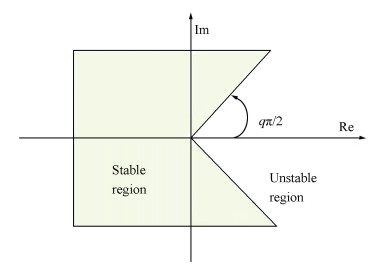 Figure 4 The division of unstable and stable regions in systems with fractional-order
Figure 4 The division of unstable and stable regions in systems with fractional-order According to Ref.[32]:if the fractional system (9) is supposed to remain chaotic, a necessary condition is in the unstable region, there is at least one eigenvalue λ.
Based on above-mentioned stability results, fractional-order memristive system (9) has a unique equilibrium point xeq=0 which is readily shown, and have four eigenvalues:
$ \left\{ \begin{array}{l}{\lambda _1} = 0\\{\lambda _2} = 3.286{\rm{ }}7\\{\lambda _3} =-0.783{\rm{ }}0 + 2.343{\rm{ }}4{\rm{i}}\\{\lambda _4} =-0.783{\rm{ }}0-2.343{\rm{ }}4{\rm{i}}\end{array} \right. $
Here the eigenvalues λ2 in the unstable region.In Fig. 5, it shows the distribution of Jacobian matrix J's eigenvalue.
Figure 5
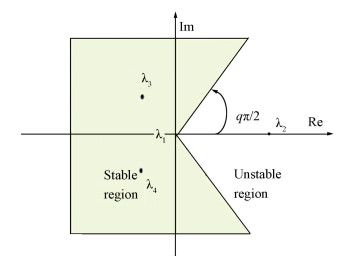 Figure 5 Eigenvalue distribution of the fractional-order memristive system
Figure 5 Eigenvalue distribution of the fractional-order memristive system 5 Numerical Simulations The parameters of system (9) are set as those in Ref.[20]: ζ=8 200 Ω·47×10-9 nF, L=18 mH, C2=68 nF, C2=6.8 nF.In order to obtain the chaotic attractor, R is set as 2 000 Ω.We perform the simulation and select the initial conditions as:
$ \left[{w\left( 0 \right), x\left( 0 \right), y\left( 0 \right), z\left( 0 \right)} \right] = \left[{0, 0.11, 0.11, 0} \right] $
Fig. 6 and Fig. 7 show the time domain curve and phase plots of a chaotic attractor found with q=0.97.
Figure 6
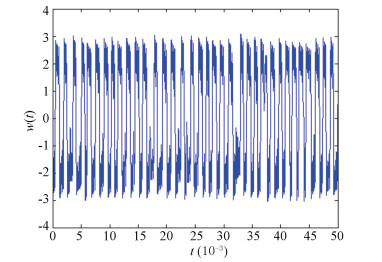 Figure 6 Time-domain plot of the system(9) when q=0.97
Figure 6 Time-domain plot of the system(9) when q=0.97 Figure 7
 Figure 7 Chaotic attractor for system (9) when q=0.97
Figure 7 Chaotic attractor for system (9) when q=0.97 Since any system containing at least one positive Lyapunov exponent is defined to be chaotic, we considered the Largest Lyapunov Exponent (LLE) λmax at first.Then the important problem is how to measure the LLE.The more popular algorithm for calculating LLE is Wolf and Jacobian algorithms[33].However, for calculating LLE of a fractional order system, Jacobian algorithm is not applicable.Therefore, in this paper, Wolf algorithm[34] is chosen, and the diagram of LLE is plotted in Fig. 8.From the figure, we can see when q>0.93, the system has positive Lyapunov exponents.Namely, the system generates chaos when q>0.93, which is consistent with the result in bifurcation diagram shown in Fig. 9.
Figure 8
 Figure 8 LLE versus q from 0.8 to 1 step with 0.02
Figure 8 LLE versus q from 0.8 to 1 step with 0.02 Figure 9
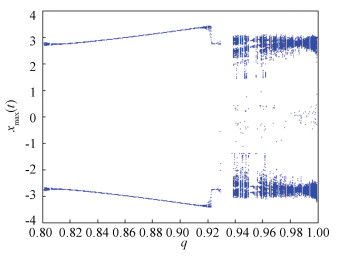 Figure 9 Bifurcation diagram with parameter q increasing from 0.8 to 1
Figure 9 Bifurcation diagram with parameter q increasing from 0.8 to 1 We simulate the system with R=2 000, and 0.8≤q≤1, the increment of q is 0.000 5.Bifurcation diagram with bifurcation parameter q is shown in Fig. 9.From the bifurcation diagram, we can see when 0.8 < q < 0.93, a limit cycle which attracts nearby solutions appears, and when q>0.93, the system losses its stability and bifurcation is observed, the corresponding phase diagrams are shown in Fig. 10 and Fig. 11.From Fig. 7 and Fig. 11, we can see a trend that the chaotic behavior in system will be strengthened as increase of q. Bifurcation diagram with q as bifurcation parameter verifies the correctness of these results in Fig. 8.
Figure 10
 Figure 10 Limit-cycle of the system (9) when q=0.8
Figure 10 Limit-cycle of the system (9) when q=0.8 Figure 11
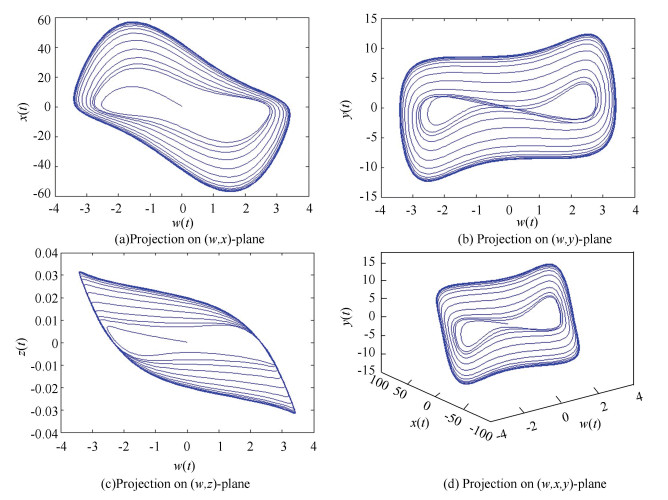 Figure 11 Phase portraits of system (9) when q=92
Figure 11 Phase portraits of system (9) when q=92 Now, when we choose q=0.97, the system can be calculated numerically with R∈[1000, 2400].From the bifurcation diagram with bifurcation parameter R in Fig. 12, we can see when R < 1 800 and R>2 100 the system is in a relatively steady state, when R is in the range of [1800,2100], the system exhibits nonlinear or chaotic-like behavior.In order to demonstrate the chaotic-like behavior, we calculate the Lyapunov exponents with different value of R, and the results are listed in Table 1. Considering numerical error in the calculation process, we analyze Lyapunov exponent which is less than 0.01 to be equivalent to zero.When R is set as 1 500 Ω and 2 300 Ω, the system remains stable and trajectories converge as shown in Fig. 13.
Figure 12
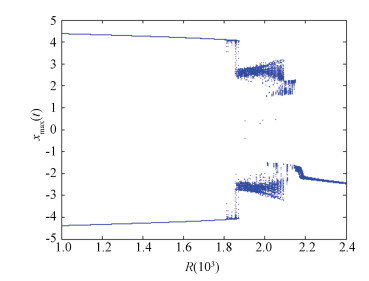 Figure 12 Bifurcation diagram vs. R
Figure 12 Bifurcation diagram vs. R 表 1
R=1 500 {0 0.009 -0.111 -8.705} Periodicity
R=1 600 {0 0.008 -0.086 -6.158} Periodicity
R=1 700 {0 0.010 -0.079 -5.807} Periodicity
R=1 800 {0 0.014 -0.065 -5.336} Chaos
R=1 900 {0 0.016 0.003 -1.240} Chaos
R=2 000 {0 0.061 0.009 -1.789} Chaos
R=2 100 {0 0.037 0.010 -1.953} Chaos
R=2 200 {0 -0.001 -0.014 -2.371} Stability
R=2 300 {0 -0.009 -0.023 -2.547} Stability
R=2 400 {0 -0.016 -0.030 -2.709} Stability
Table 1 Lyapunov exponents
Figure 13
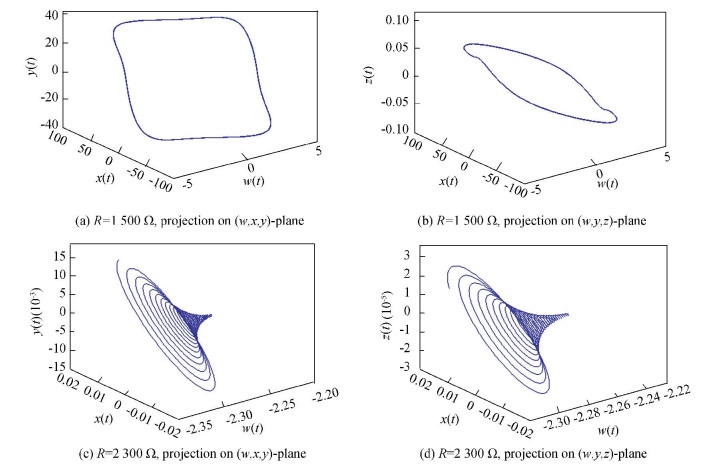 Figure 13 Phase plane projection of system (9) when R=1 500 and R=2 300 Ω
Figure 13 Phase plane projection of system (9) when R=1 500 and R=2 300 Ω 6 Conclusions In this article, dynamic behaviors of memristive system with fractional-order are studied via stability analysis and numerical simulations.The phase diagrams, bifurcation diagrams and LLE show that the fractional-order memristive system exhibits chaos when the system parameters exceed the certain threshold.LLE is calculated by the Wolf algorithm, which was readily used in preview research.The simulation results show the effectiveness of the algorithm, and good agreement with theoretical analysis.
References
[1] Chua L O. Memristor-The missing circuit element. IEEE Transactions on Circuit Theory, 1971, 18(5): 507-519. DOI:10.1109/TCT.1971.1083337 (
 0)
0)[2] Strukov D B, Snider G S, Stewart D R, et al. The missing memristor found. Nature, 2008, 453(7191): 80-83. DOI:10.1038/nature06932 (
 0)
0)[3] Cai Z, Huang L, Zhang L. New conditions on synchronization of memristor-based neural networks via differential inclusions. Neurocomputing, 2016, 186(23): 235-250. DOI:10.1016/j.neucom.2015.12.084 (
 0)
0)[4] Vourkas I, Sirakoulis G C. Memristor-Based Nanoelectronic Computing Circuits and Architectures. Berlin: Springer International Publishing, 2016, 1-28. (
 0)
0)[5] Yesil A, Babacan Y, Kacar F. A new DDCC based memristor emulator circuit and its applications. Microelectronics Journal, 2014, 45(3): 282-287. DOI:10.1016/j.mejo.2014.01.011 (
 0)
0)[6] Dasgupta T, Paral P, Bhattacharya S, et al. Grayscale image encryption based on high-dimensional fractional order Chua's system. Advanced Computing, Networking and Informatics, 2014, 2(2): 317-324. DOI:10.1007/978-3-319-07350-7_35 (
 0)
0)[7] Tarasov V E. Review of some promising fractional physical models. International Journal of Modern Physics B, 2013, 27(9): 187-205. DOI:10.1142/S0217979213300053 (
 0)
0)[8] Shen W, Zeng Z, Zou F. Intelligent Computing Theory. Berlin: Springer International Publishing, 2014, 838-844. (
 0)
0)[9] Liu X, Xu Y. Bogolyubov-type theorem with constraints generated by a fractional control system. Fractional Calculus & Applied Analysis, 2016, 19(1): 94-115. DOI:10.1515/fca-2016-0006 (
 0)
0)[10] Aslam M S, Raja M A Z. A new adaptive strategy to improve online secondary path modeling in active noise control systems using fractional signal processing approach. Signal Processing, 2014, 107(C): 433-443. DOI:10.1016/j.sigpro.2014.04.012 (
 0)
0)[11] Gonzalez E A, Petras I. Advances in fractional calculus:Control and signal processing applications. Proceedings of the 2015 Carpathian Control Conference (ICCC), 2015, 16: 147-152. DOI:10.1109/CarpathianCC.2015.7145064 (
 0)
0)[12] Oldham K B, Spanier J. The Fractional Calculus. New York: Academic Press, 1974, 1947-1953. (
 0)
0)[13] Hartley T T, Lorenzo C F, Qammer H K. Chaos in a fractional order Chua's system. IEEE Transactions on Circuits & Systems Ⅰ:Fundamental Theory & Applications, 1995, 42(8): 485-490. (
 0)
0)[14] Grigorenko I, Grigorenko E. Chaotic dynamics of the fractional lorenz system. Physical Review Letters, 2003, 91(3): 034101-034101. DOI:10.1103/PhysRevLett.91.034101 (
 0)
0)[15] Petrá? I. Fractional-order memristor-based Chua's circuit. IEEE Transactions on Circuits and Systems Ⅱ:Express Briefs, 2010, 57(12): 975-979. DOI:10.1109/TCSII.2010.2083150 (
 0)
0)[16] Petrá? I. Chaos in fractional-order population model. International Journal of Bifurcation & Chaos, 2012, 22(4): 1250072. DOI:10.1142/S0218127412500721 (
 0)
0)[17] Bai J, Wen G, Rahmani A, et al. Consensus with a reference state for fractional-order multi-agent systems. International Journal of Systems Science, 2015, 47(1): 222-234. DOI:10.1080/00207721.2015.1056273 (
 0)
0)[18] Elsadany A A, Matouk A E. Dynamical behaviors of fractional-order Lotka-Volterra predator-prey model and its discretization. Journal of Applied Mathematics & Computing, 2015, 49(1): 269-283. DOI:10.1007/s12190-014-0838-6 (
 0)
0)[19] Shaik K B, Mandal M K. Chaos from jerk circuit. Resonance, 2010, 15(3): 257-267. DOI:10.1007/s12045-010-0039-z (
 0)
0)[20] Muthuswamy B. Implementing memristor based chaotic circuits. International Journal of Bifurcation & Chaos, 2012, 20(5): 1335-1350. DOI:10.1142/S0218127410026514 (
 0)
0)[21] Wang M L, Chang R Y, Yang S. Generalization of generalized orthogonal polynomial operational matrices for fractional and operational calculus. International Journal of Systems Science, 1987, 18(5): 931-943. DOI:10.1080/00207728708964020 (
 0)
0)[22] Gorenflo R, Mainardi F. Fractional calculus:Integral and differential equations of fractional order. Mathematics, 2008, 49(2): 277-290. (
 0)
0)[23] Michele C. Linear models of dissipation whose Q is almost frequency independent-Ⅱ. Geophysical Journal International, 1967, 13(5): 529-539. DOI:10.1111/j.1365-246X.1967.tb02303.x (
 0)
0)[24] Davison M, Essex C. Fractional differential equations and initial value problems. Math Scientist, 1998, 23(2): 108-116. (
 0)
0)[25] Muthuswamy B, Kokate P P. Memristor-Based Chaotic Circuits. IETE Technical Review, 2009, 26(6): 417-429. DOI:10.4103/0256-4602.57827 (
 0)
0)[26] Zhong G Q. Implementation of Chua's circuit with a cubic nonlinearity. IEEE Transactions on Circuits & Systems Ⅰ Fundamental Theory & Applications, 1995, 41(12): 934-941. DOI:10.1109/81.340866 (
 0)
0)[27] Khalil K H. Nonlinear Systems. 3nd ed. New Jersey: Prentice Hall, 2002. (
 0)
0)[28] Donato C, Giuseppe G. A novel memristor-based chaotic system with fractional order.Proceedings of the 2014 International Conference on Fractional Differentiation and ITS Applications. Piscataway:IEEE, 2014, 1-6. DOI:10.1109/ICFDA.2014.6967415 (
 0)
0)[29] Cafagna D, Grassi G. On the simplest fractional-order memristor-based chaotic system. Nonlinear Dynamics, 2012, 70(2): 1185-1197. DOI:10.1007/s11071-012-0522-z (
 0)
0)[30] Teng L, Lu Herbert H C, Wang X Y, et al. Chaotic behavior in fractional-order memristor-based simplest chaotic circuit using fourth degree polynomial. Nonlinear Dynamics, 2014, 77(1/2): 231-241. DOI:10.1007/s11071-014-1286-4 (
 0)
0)[31] Delavari H, Baleanu D, Sadati J. Stability analysis of Caputo fractional-order nonlinear systems revisited. Nonlinear Dynamics, 2012, 67(4): 2433-2439. DOI:10.1007/s11071-011-0157-5 (
 0)
0)[32] Tavazoei M S, Haeri M. A necessary condition for double scroll attractor existence in fractional-order systems. Physics Letters A, 2007, 367(1/2): 102-113. DOI:10.1016/j.physleta.2007.05.081 (
 0)
0)[33] Meng J, Zhu T Y, Chen X, et al. The nonlinear dynamics characteristics of stock market and its variation. Applied Mechanics & Materials, 2014, 513-517: 3188-3193. DOI:10.4028/www.scientific.net/AMM.513-517.3188 (
 0)
0)[34] Wolf A, Swift J B, Swinney H L, et al. Determining Lyapunov exponents from a time series. Physica D Nonlinear Phenomena, 1985, 16(3): 285-317. DOI:10.1016/0167-2789(85)90011-9 (
 0)
0)